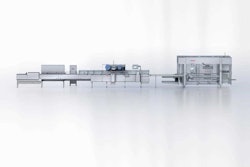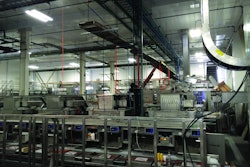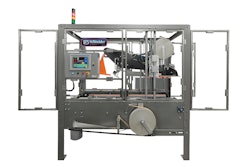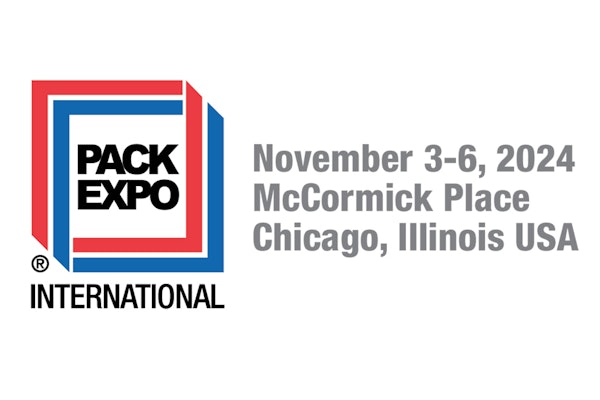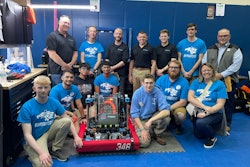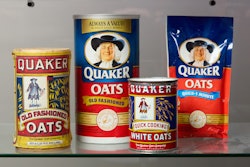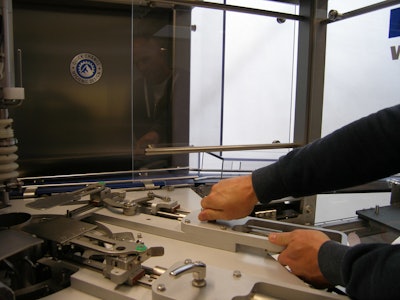
When product characteristic variability is as pronounced as it is between portions of block cheese, with fluctuating density, dimension, and weight, packagers and their packaging machinery partners are met with a special set of challenges. Frequent product changes only exacerbate the situation. But Germany’s Alpenland Maschinenbau GmbH (ALPMA) says its new MultiSAN film wrapping (or fold wrapping) machine is up to the task, packaging round and rectangular soft cheeses, as well as cheeses in cylindrical and half-moon formats, while nearly eliminating reconfigurations and reducing setup times.
“There are cheese makers today that make only a few types of cheese, but nevertheless change over their production every two or three hours because they produce every order by the truckload,” Helmut Eitermoser, MultiSAN designer at ALPMA, says. The drum beat of every smaller batch sizes applies to cheese manufacturing just as it does so many other manufacturing sectors, reflecting the larger, usual trends of customer-specific product requirements, shorter product life cycles, and booming product variety.
Finding a solution
Cheese makers had long used packaging systems in which a mechanical master shaft with cam drives mounted on it drove the synchronous motion of the individual mechanisms.
“These cam machines are the right solution for packaging just one type of product. They are very precise, cost-effective, and durable,” Eitermoser says. “Two similar format shapes—round and half-moon—and different sizes with the same shape can also be processed on these machines with a reasonable effort. This does, however, always require a compromise, which simply means that the packages for each product version are less than optimal. When several different products are to be packed in a folded or wrapped package on the same machine with rapid changeovers, the cam machine reaches its limits. Extensive reconfiguration or even machine replacement is required before a product changeover.”
Electronic master shaft and cams
ALPMA’s answer to this problem was to employ linear motor technology alongside a virtual master shaft and an electronic cam system, resulting in a more flexible soft cheese-packaging machine.
The envelope folds under the cheese, typical for wrapped packaging, are now produced by means of four horizontally mounted LinMot linear motors that each drive one shutter blade. Once the cheese has been wrapped in the packing film by the machine, and has been fixed in place on a round plate by a gripper, the shutters press the protruding film together on the bottom of the product in rapid succession, thus producing the desired fold pattern. Another linear motor axis moves the cheese off of the round plate onto a belt that transports the cheese to the next stations.
Linear servo over rotary choice
“Demo units have shown that rotary servo motors are not well suited for this task, because they take up too much space,” Eitermoser says, explaining his decision in favor of linear motion.
The MultiSAN uses model PS01-23x160H-HP-R motors from LinMot that have a diameter of 23 mm (stator)—not including the plug connection on the end—but produce a peak force of 130 N when coupled with the LinMot E1130-DP-HC controller. This combination of small size and performance was unique to this motor selection, according to Eitermoser.
The matching sliders are available as standard products in many variants, for strokes from 20 to 780 mm. The version selected for the MultiSAN has a stroke of 120 mm.
Complete format changeover in minutes
The space-saving form factor of the linear servo motor also decisively contributed to the machine taking up the same floor space as the comparable version with a mechanical master shaft, the SAN 80 TS. The cycle time also matches as both run at up to 80 cycles.
The commonalties end there, though. To make the MultiSAN more modular in construction, ALPMA combined the
mechanical unit with the shutter drives into one module that is used in several places on the machines. It is designed to function as a heat sink for the linear motors as well.
Changing formats on the MultiSAN is simple due to the consistent modular construction and the use of linear servos instead of a mechanical master shaft. In just a few steps, the closure module can be removed and installed in a different position without having to disconnect the flexible supply cable for the linear motor. A corresponding program just needs to be started from the touchscreen controls, and then the same machine that had been processing one shape can package another cheese format. Various configuration sets (format sets) can also be used to expand the machine’s range.
Optimal packaging results
“We have also made use of the very sensitive and direct reaction performance of the linear motors to provide the operator with an instrument for reacting to variations in product consistency,” Eitermoser says. “The responsible parties on site can thus set their own parameters for various consistencies, so that the machine operator can adapt the machine settings on the fly to changes in product characteristics just by pushing a button.”
